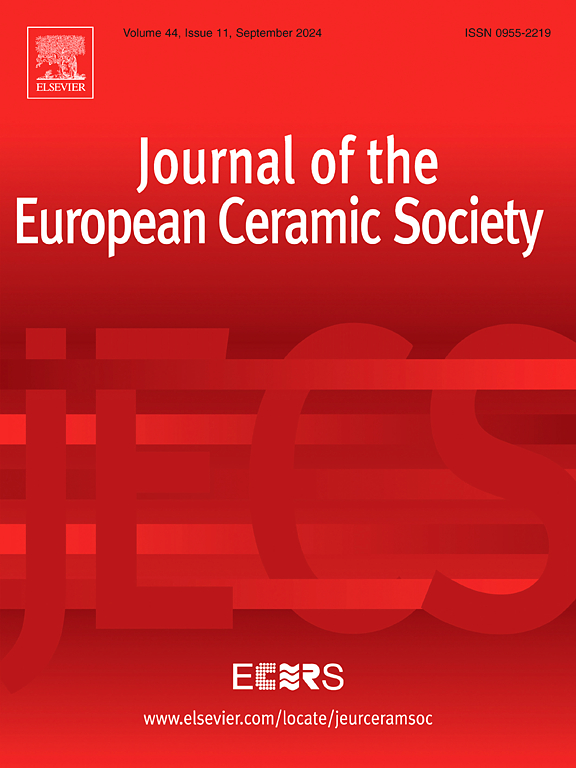Influence of tabular and white fused alumina aggregates on Young’s modulus evolution versus temperature in refractory castables
IF 5.8
2区 材料科学
Q1 MATERIALS SCIENCE, CERAMICS
Journal of The European Ceramic Society
Pub Date : 2025-05-31
DOI:10.1016/j.jeurceramsoc.2025.117583
引用次数: 0
Abstract
The main alumina aggregates used in refractory applications are Tabular Alumina (TA) and White Fused Alumina (WFA). The different processing routes applied in producing TA and WFA greatly impact the final microstructure of these aggregates. The effects of the distinct microstructural properties in the aggregates in terms of grain sizes and porosity on the thermomechanical behaviour of refractory castables are not well understood. Young's modulus evolution with temperature was measured on alumina-based refractory castables containing either tabular or white fused alumina aggregates. Acoustic emissions were also measured to monitor microcracks developed in the refractory castables during cooling after being subjected to high temperatures. Fine TA and WFA aggregates were discovered to induce little to no microcracks in the refractory castables. Meanwhile, coarse WFA aggregates induced significant microcracks compared to TA aggregates in the alumina-based refractory castables. This paper has demonstrated successfully the influence of the varying grain sizes within alumina aggregates in promoting non-linear behaviour in refractory castables that potentially can be promising in thermal shock applications.
板状和白色刚玉骨料对耐火浇注料杨氏模量随温度变化的影响
用于耐火材料应用的主要氧化铝骨料是片状氧化铝(TA)和白色刚玉(WFA)。制备TA和WFA的不同工艺路线对骨料的最终微观结构有很大影响。在晶粒尺寸和孔隙率方面,聚集体中不同的微观结构特性对耐火浇注料的热力学行为的影响尚未得到很好的理解。杨氏模量随温度的变化,测量了铝基耐火浇注料中含有板状或白色刚玉骨料。还测量了声发射,以监测高温冷却后耐火浇注料中产生的微裂纹。细密的TA和WFA集料在耐火浇注料中几乎不产生微裂纹。与此同时,在铝基耐火浇注料中,粗WFA骨料比TA骨料产生了显著的微裂纹。本文成功地证明了氧化铝骨料中不同晶粒尺寸对促进耐火浇注料非线性行为的影响,这在热冲击应用中具有潜在的前景。
本文章由计算机程序翻译,如有差异,请以英文原文为准。
求助全文
约1分钟内获得全文
求助全文
来源期刊

Journal of The European Ceramic Society
工程技术-材料科学:硅酸盐
CiteScore
10.70
自引率
12.30%
发文量
863
审稿时长
35 days
期刊介绍:
The Journal of the European Ceramic Society publishes the results of original research and reviews relating to ceramic materials. Papers of either an experimental or theoretical character will be welcomed on a fully international basis. The emphasis is on novel generic science concerning the relationships between processing, microstructure and properties of polycrystalline ceramics consolidated at high temperature. Papers may relate to any of the conventional categories of ceramic: structural, functional, traditional or composite. The central objective is to sustain a high standard of research quality by means of appropriate reviewing procedures.
 求助内容:
求助内容: 应助结果提醒方式:
应助结果提醒方式:


